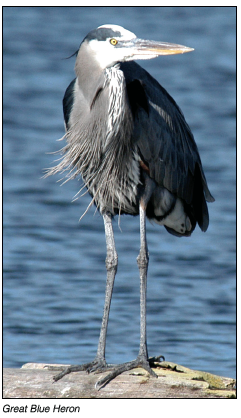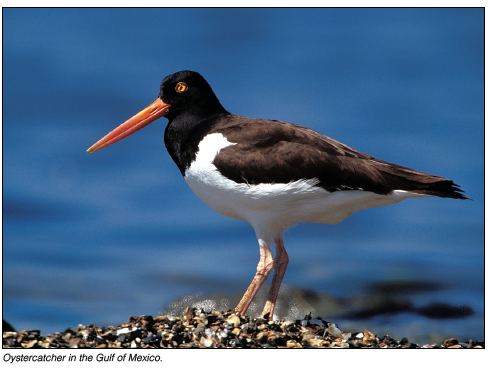MICHAEL GIVANT
Contributing Columnist
givant@lbknews.com
As my wife and I start the walk to Beer Can Island, my heart is noticeably beating and  memories come flooding back. There’s the spot where I unearthed a large, almost undamaged lightning whelk that now sits on a bookshelf in our home in New York. There’s a partial makeshift path behind the mangroves where we sometimes walked when the tide was high. There are large mangroves jutting out near it, which we don’t remember, that make this spot look like a foreign country.
memories come flooding back. There’s the spot where I unearthed a large, almost undamaged lightning whelk that now sits on a bookshelf in our home in New York. There’s a partial makeshift path behind the mangroves where we sometimes walked when the tide was high. There are large mangroves jutting out near it, which we don’t remember, that make this spot look like a foreign country.
We come to the familiar upturned root systems of fallen trees lying on the sand and in the water. Here the landscape changes dramatically. Those roots systems, once trees’ arteries now dried and pitted from seawater, stand like works of art. They are wide enough to be measured in yards. The root systems aren’t decorated with shells as they used to be, but one has a thick rope hanging from it.
My wife wants to know where the entrance through the trees and mangroves is that leads to the first lagoon. There are more fallen trees and vegetation than I remember making the location a bit difficult to find. As we walk through, one thing hasn’t changed — little cactus-like burrs stick painfully to my bare feet as they often did in the past.
We walk on the familiar white sands and look at the leaning, tal perched in them. The neighborhood has changed as those trees used to be the province of ospreys, great blue herons and an occasional peregrine falcon.
A turkey vulture lifts off in a slow lumbering fashion crossing tree limbs as it spreads its wings, showing their pewter design. As the bird flies, a small white feather drifts to the ground, a souvenir the turkey vultures sometimes leave. My wife finds a comfortable fallen tree, which serves as a temporary sofa, like one she used to sit on, while I walk out to Beer Can’s tip.
There the sand is littered with a large number of dead fish ranging from various stages of soft tissue decay to skeletons. In the water by the Longboat Pass Bridge a snowy egret walks in the water. The lithe white bird with black legs and yellow feet that it uses to stir the muck and raise prey, oddly, doesn’t seem interested in eating. I look at the black legs, which in front have yellow down the center, and get a glimpse of those feet that birders refer to as “golden slippers.” Nice.
At the sand’s end, in still-as-glass water, are five feeding white ibises. These birds, with long, down-curved Lifebuoy soap-colored bills are, a picture of serenity. Over on a sand spit are two large white birds with knobby black heads, long dark bills and legs with pink feet, wood storks that I’ve not seen out here before. These birds are on the endangered species list and I always watch them with a sense of veneration. They stand at the water’s edge with their reflections in the water. Four for the price of two. They walk into the water hunched over, their bodies looking like puffy balls of white. Their reflections move with them. The “woodies” use a method called “grope-feeding” by moving their partially open, long down-curved bills in the water, waiting for prey fish and snapping them shut as fast as 25 milliseconds.
In another part of the lagoon is a little blue heron. The bird’s wine-colored neck and head are hard to see because it’s walking in the green reflection of mangroves on shore. The patient fish hunter is looking for breakfast. Near the shore are a great blue heron and a great egret. This is the Beer Can that I remember. Back on Whitney Beach, a large group of red knots are still feeding and two willets, large non-descript brown sandpipers, lift off over the water heading south, flashing their bold white wing pattern that dazzles. I l and bare gray trees to see several turkey vultures remember earlier seeing an oystercatcher flying in that direction. At the end of last winter several oystercatchers fed there. I walk south in the hope of seeing these birds with the bright red, thick bills that are used to open oysters and clams. I find five oystercatchers! Three are resting in the sand while two are standing on one leg. One has its red bill resting on its back. They are taking a break from feeding, which is characteristic of these birds, as they eat a limited amount at one time. For a while I look at those thick red bills and the yellow red-rimmed eye, which remind me of a dartboard.
Walking over to the assembled multitude of gulls and terns, I find sandwich terns and through binoculars look
at their black bills whose tips are yellow. There’s no discernable break or demarcation point where the black ends and the yellow begins. It just happens — nature’s handiwork. It’s what I call the infinite beauty of birds, which can be found in variations between species; differences between juveniles and adults; seasonal changes in plumages; differences between sexes or differences in lighting.
With so many species of birds the possibilities for beauty seem infinite. That beauty is a major reason why I watch birds. Inwardly I smile because today’s day one and I’ve got three more months to go.

